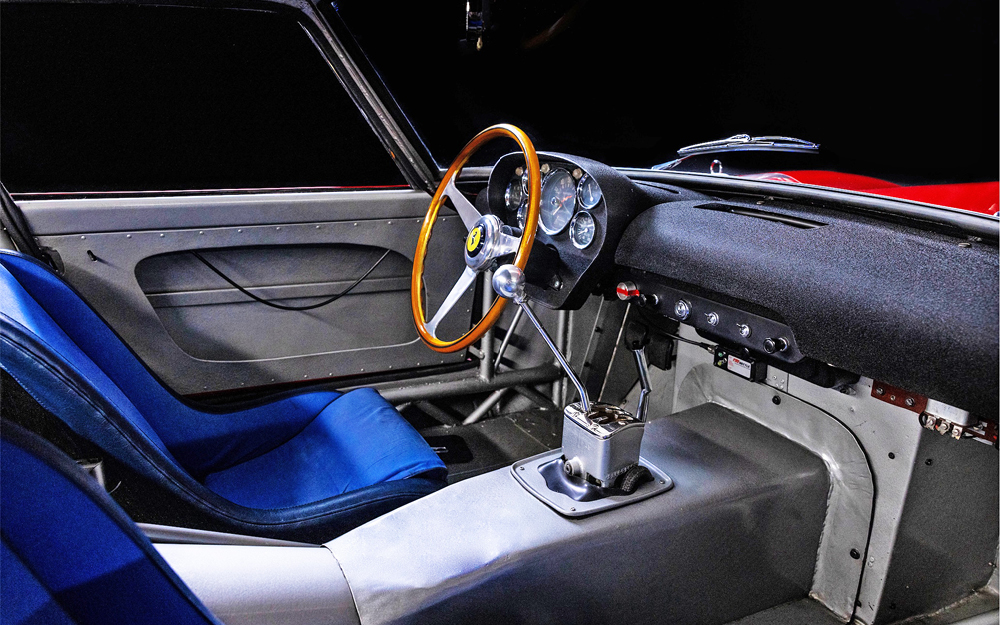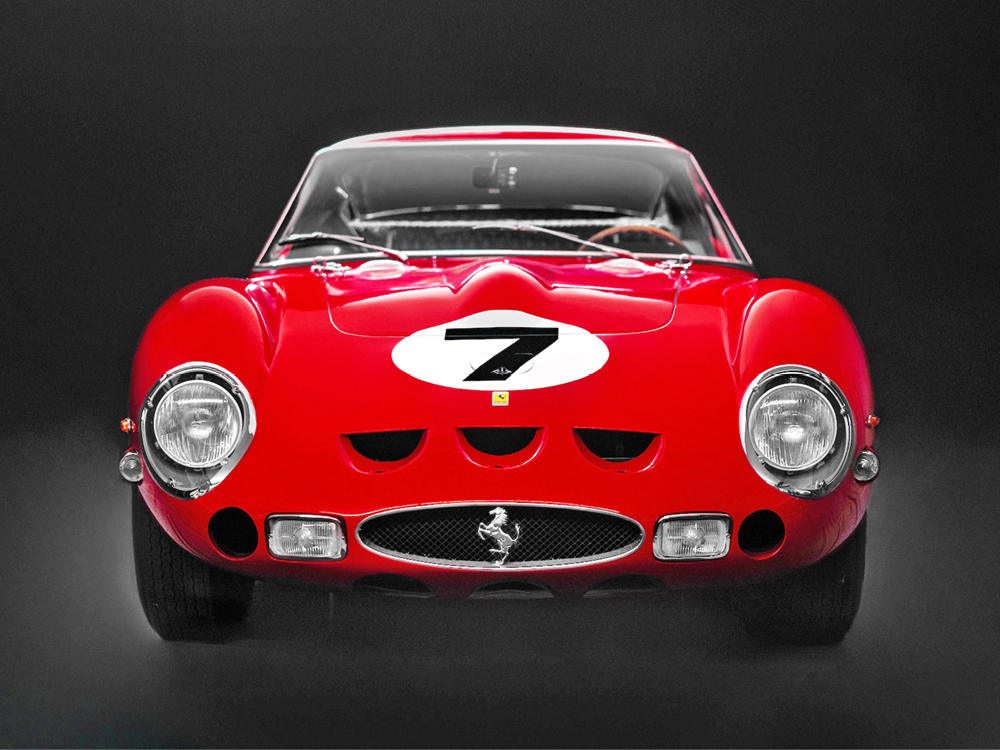A chance to own a one-of-a-kind historic Ferrari
Do you remember Ferrari history from 2018? In June that year, WeatherTech founder David MacNeil reportedly paid $70M for a 250 GTO (chassis #4153), which at the time was believed to be the most ever paid for a classic car. Two months later, GTO #3413 sold for $48.4M at RM Sotheby’s Monterey auction.
On November 13, we could see the highest price ever paid for a Ferrari GTO sold at auction. RM Sotheby’s Modern and Contemporary Art sale in New York will offer a truly unique version of Ferrari’s seminal GT racecar, the only 4.0-liter version that the Scuderia Ferrari factory race team retained and campaigned. The car is identified as a 330LM / GTO, due to the 4.0-liter V12 replacing the 250 GTO’s 3.0-liter V12. The multi-award-winning Ferrari has a pre-sale estimate “in excess of $60M.”
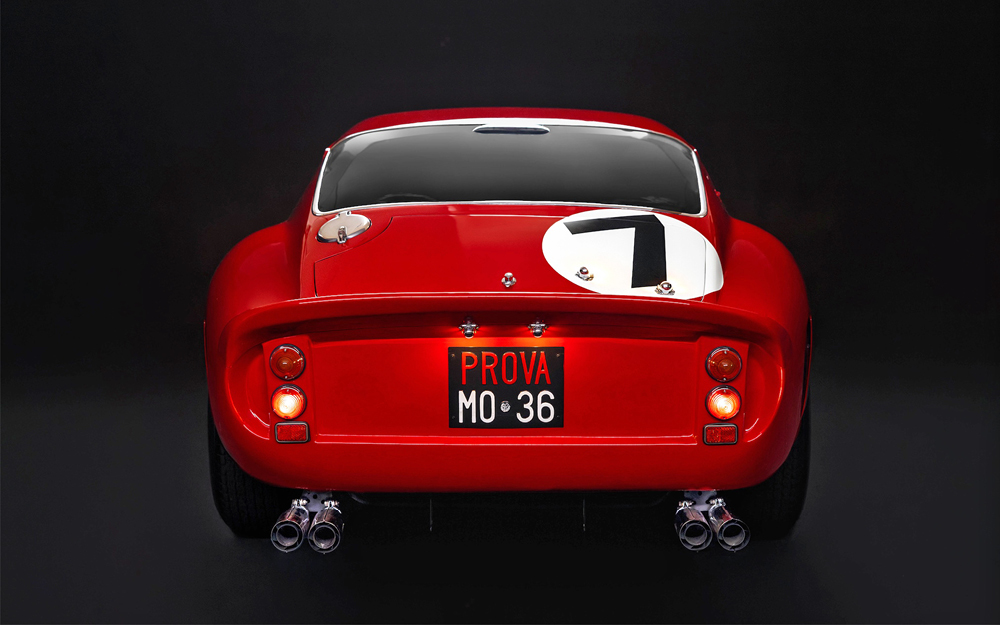
Birth of the GTO
Ferrari’s 250 GT series, introduced in 1956 and using the Colombo 3.0-liter V12, brought small batches of road cars and dual-purpose road/track GTs like the 250 GT Competizione “Tour de France” and the 250 GT Short-Wheelbase Berlinetta. Ferrari would send the 250 GT series out in a blaze of racing glory with the 250 GTO, while capping the road car side with one of its most beautiful models ever, the 250 GT Lusso.
The 250 GTO began as an evolution of the 250 SWB and was intended to replace it as a car for privateers to campaign in the FIA World Sportscar Championship. For 1962, the FIA had changed it to the International Championship for GT Manufacturers rather than sports prototypes, and the 250 GTO seemed tailor-made for the series.
Engineered by Giotto Bizzarrini before he left Ferrari in the 1961 “palace revolt” that saw top engineers and executives leave the company, the aluminum-body GTO rode on a lighter, stiffer variation of the SWB’s 94.5-inch wheelbase chassis. At just under 2,000 pounds, the 250 GTO was about 150 pounds lighter than the competition version of the 250 SWB.
Taking on Le Mans
Power for the 250 GTO came from the Ferrari Testa Rossa’s six-carburetor, 300-horsepower 3.0-liter V12, but teamed in the GTO to a new five-speed transmission. Significantly, the new chassis architecture and the dry-sump oil system allowed for the V12 to be placed lower than in the outgoing 250 SWB, giving a lower center of gravity and correspondingly improved handling. The GTO body’s aerodynamics were refined in the wind tunnel and track testing to maximize speed and stability. The efforts paid off with a top speed of about 180 mph.
As the Ferrari factory race team was focused on the mid-engine Dino prototype racecars, the 250 GTO filled out race grids in the hands of private owners. These included Ferrari’s own distributors, including Maranello Concessionaires in Italy and Luigi Chinetti’s North American Racing Team.
The 250 GTO made its mark quickly, with the second car built (chassis # 3387) taking first in class and second overall at the 1962 12 Hours of Sebring, with Phil Hill and Olivier Gendebien driving for Chinetti. Among other significant victories, Ferrari GTOs won the Tour de France twice, continuing the marque’s long streak there. Ferrari 250 GTOs took second place in the 24 Hours of Le Mans in 1962 and 1963, ceding outright victory to Ferrari’s factory-backed prototypes.
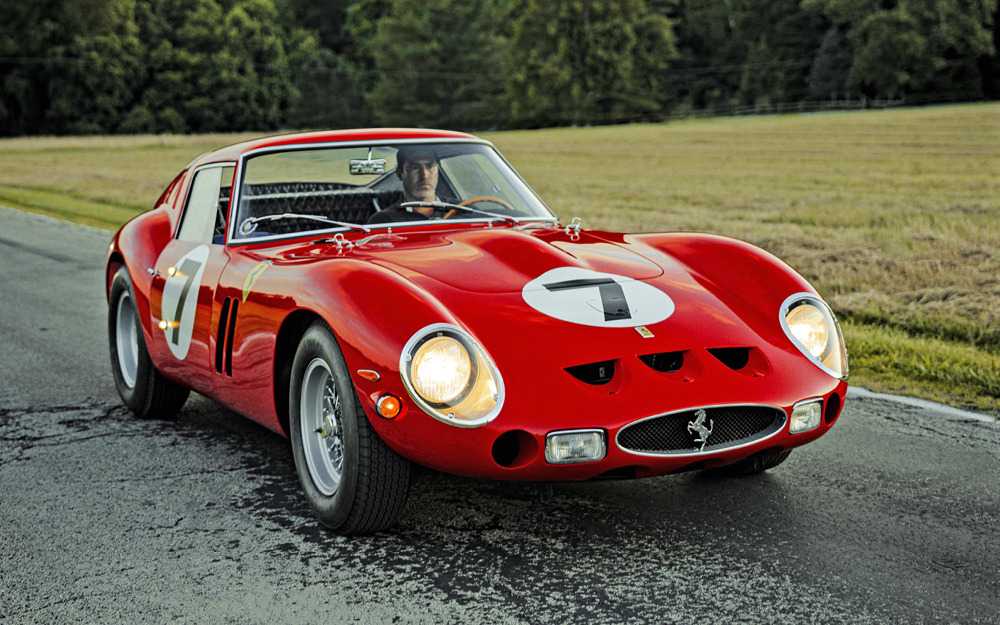
Tough Competition
The 250 GTO’s stunning performance and endurance propelled Ferrari to the International Championship for GT Manufacturers in both 1962 and 1963 in the over 2-liter category. For 1964, the Division III category also included cars over 3 liters, bringing tough competition from the Shelby Cobra Daytona coupes, lightweight Jaguar E-Types, and Aston Martin DB4 GT “Project cars.”
For 1962, a change made by France’s ACO sanctioning body for Le Mans opened the door to a 4.0-liter class for GT “prototypes” that might theoretically result in road car production. Other races gave the green light on this, including the 12 Hours of Sebring, the Targa Florio, and the Nürburgring 1000 Kilometer.
Ferrari took the opportunity to muscle-up the GTO, installing a 4.0-liter, three-carburetor V12 into chassis #3765, the car offered by RM Sotheby’s. (The engine was still based on the Colombo design.) This was approximately the ninth GTO built by then, and sequentially, the 14th of 34 examples built with Tipo 1962 coachwork, per RM Sotheby’s.
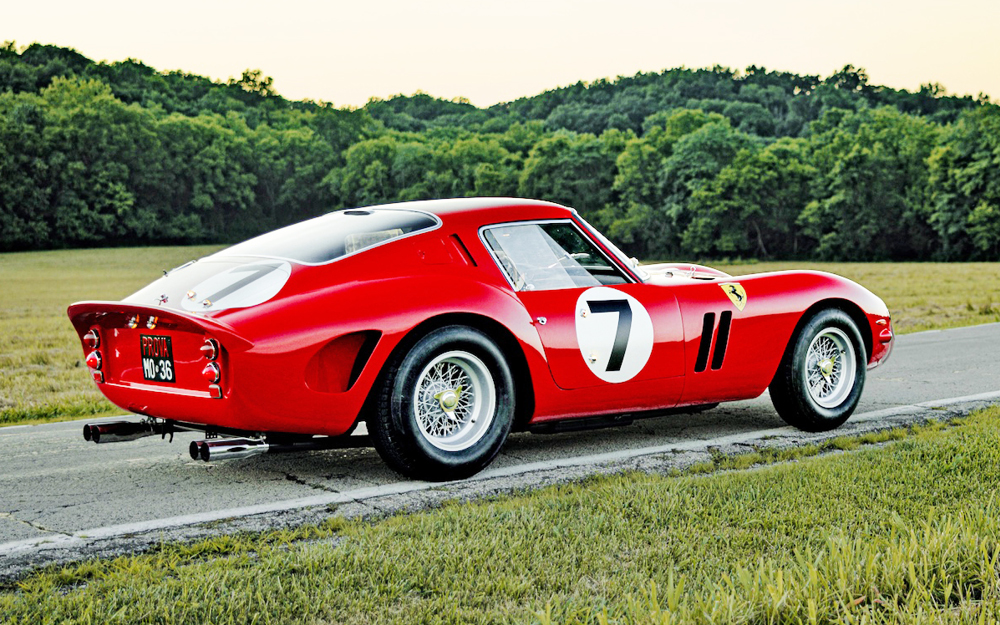
Disappointment at Le Mans
This super-GTO debuted as a Ferrari factory team car at the Nürburgring 1000 KM on May 27, 1962, where it was entered as car #120. Factory drivers Mike Parkes and Willy Mairesse drove the car to a class win and second-overall finish.
Ferrari then gave the 4.0-liter car a shot at Le Mans, for which the builder had already stacked the deck with its mid-engine prototypes. A number of privateers entered 250 GTOs, as well. The 4.0-liter GTO got an engine transplant (#40 SA) featuring six Weber carburetors. Engine output was estimated at about 400 horsepower, a 30-percent boost over the 3.0-liter 250 GTO.
Early in the race on Saturday, Parkes ran up against the limits of the car’s brakes, locking all four approaching the Mulsanne corner as he attempted a pass. The 30 minutes he spent digging the car out of the sand dropped him back considerably. Later, in the sixth hour of racing, sand clogging the radiator caused overheating that put the car out of the race. A Ferrari factory team 275 P won the race, followed by two 330 Ps in second and third.
Ferrari would try the 4.0-liter front-engine GT formula again with the 330 LMB, a car that essentially combined the GTO’s front bodywork with the 250 Lusso rear body. None of the four 330 LMBs built exceled in competition, which had been taken over by mid-engine cars.
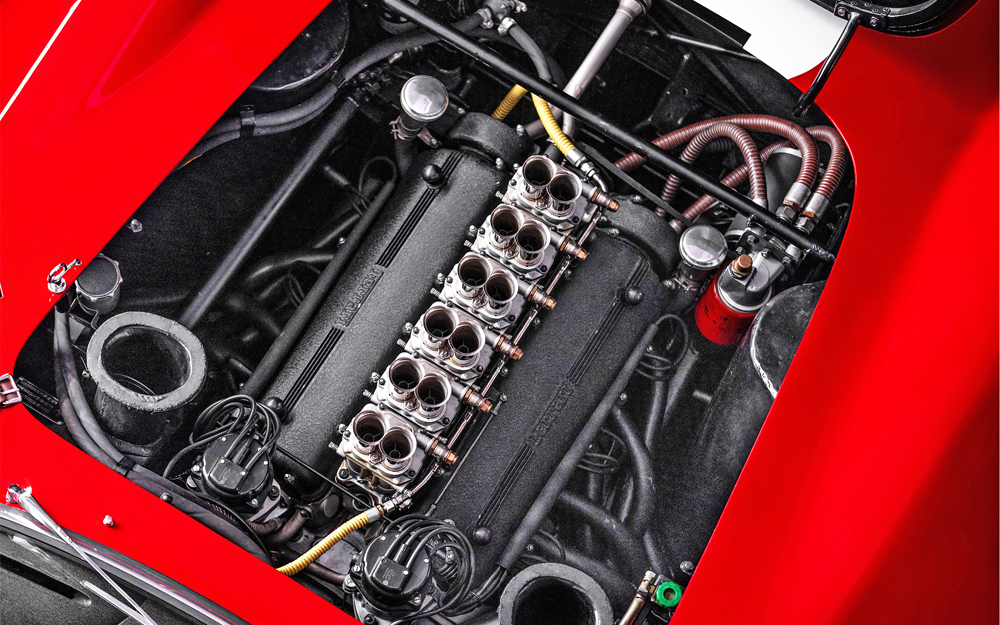
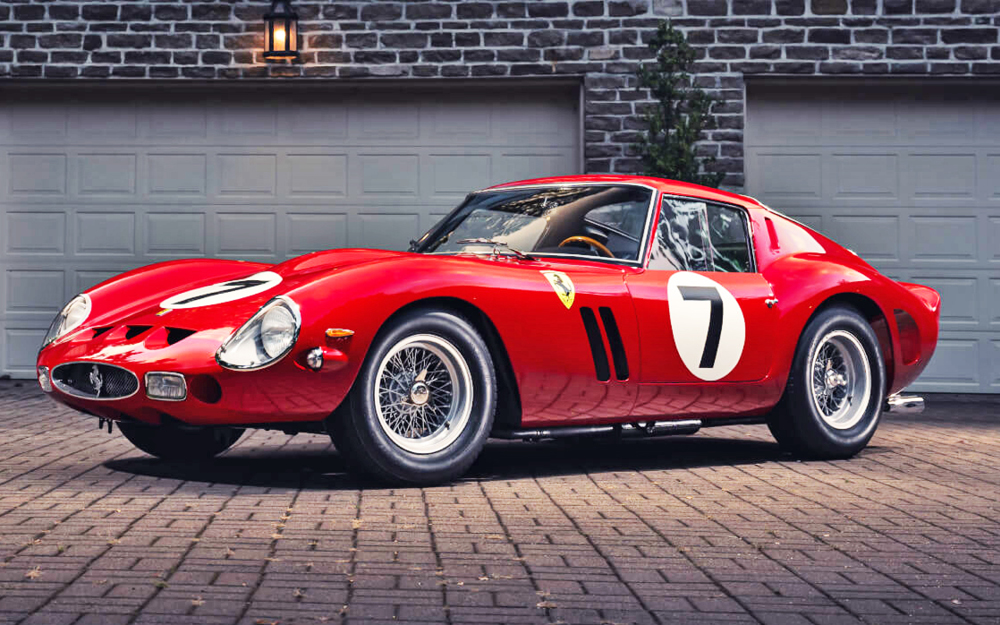
From Racer to Show Star
By 1974, GTO #3765 was in the hands of Fred Leydorf of Birmingham, Michigan. In addition to being manager of the American Motors Corp. engine design team, Leydorf was a chairman of the Ferrari Club of America, and his ownership brought #3765 considerable attention within the Ferrari collecting world. Over the following 10 years, he exhibited the GTO at several FCA meets, and he also displayed the car at the Styling Auto Show staged by the Chrysler Design Office in October 1976.
In 1985, Leydorf sold the one-of-a-kind Ferrari to the consignor, a collector in Ohio.
After being treated to a full restoration at Shelton Ferrari in Fort Lauderdale, Florida, the 330 LM/GTO won numerous awards, including Winner of an FCA Platinum Award and the Coppa Bella Macchina at the Cavallino Classic; second in the GTO class at the 2011 Pebble Beach Concours d’Elegance (among 23 total GTOs!); Best of Show at the Amelia Island Concours d’Elegance, and Blue Ribbon winner at the Meadow Brook Concours d’Elegance.
Now, one Ferrari buff will be able to add the ultimate trophy to their own collection when this 1962 Ferrari 330 LM / GTO crosses the block in November.
